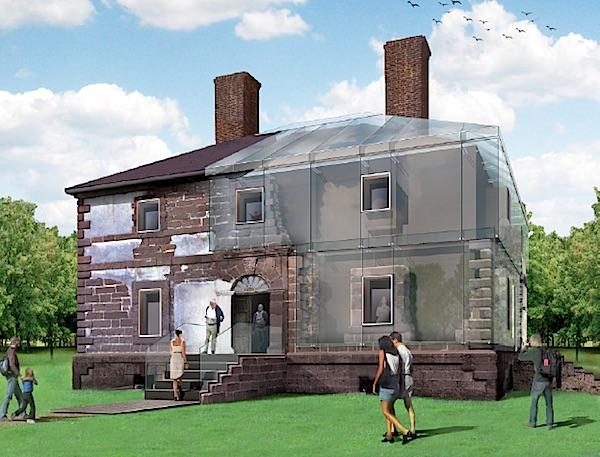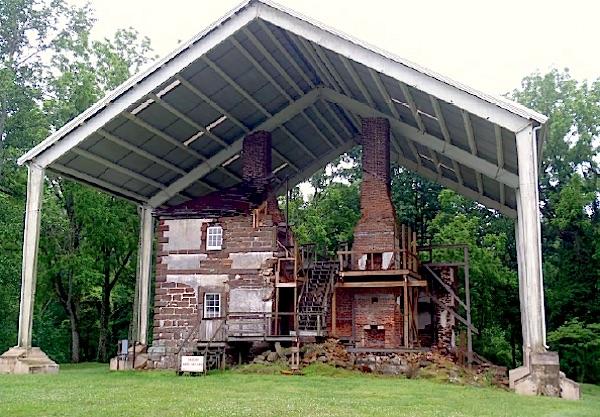
Today the remains of the Lees' mansion are partially protected. Down the road, the entire mansion will be pieced back together, though with glass walls in places to allow you to 'see' into the construction and history. /Glass house rendering courtesy of Menokin Foundation
You don't need to paddle to enjoy this trail, as history and beauty runs right down to the waterline. Our group headed to the Cat Point Creek put-in, but before dipping a blade we briefly explored the remains of Francis Lightfoot Lee's 18th century mansion. Lee was one of the signatories of the Declaration of Independence, and had a particularly generous father-in-law. Upon his marriage in 1769 to Rebecca Tayloe, John Tayloe II gave the couple not only the property along Menokin Bay, but also paid for construction of their Neo-Palladian home.
Today just a crumbling shell of the couple's mansion remains standing, but that slowly is changing. While the Menokin Foundation is working on a $7 million, 4-year effort to save the mansion, its intention is not to fully recreate the two-story house. Rather, the plan is to restore some of the original walls, and use structural glass to finish the remaining walls. Visitors to this 'glass house'would be able to gain insights into 18th century construction practices and, in general, come to understand a chapter of America's history.

Much work remains to restore Francis Lightfoot Lee's mansion/Kurt Repanshek
Some of the decorative stone trim that dresses out the sandstone walls remains, as do remnants of the white oak used throughout the interior. Though much of the house has collapsed, the original architectural plans remain and are being used to help with the reconstruction.
Behind the house, you can see where terraced gardens once grew, and further down are faint traces of 'rolling roads' that led down to the bay so barrels of tobacco could be loaded onto barges that would then transport the goods down to the Rappahannock River 4-5 miles downstream.
When construction is finished, artworks, audio programs, discreet lighting and augmented reality productions will be employed to explore the history of the home and the time the Lees lived here.
The Menokin Foundation is just one historical connection to the water trail. The National Park Service has worked with the local tribes to identify and map indigenous cultural landscapes in the region, organized multi-stakeholder work on landscape conservation projects, secured Land and Water Conservation Fund dollars for land protection along the trail, and been involved with preservation work at the site of Powhatan's village. It was there that Captain Smith was taken after he was captured.


